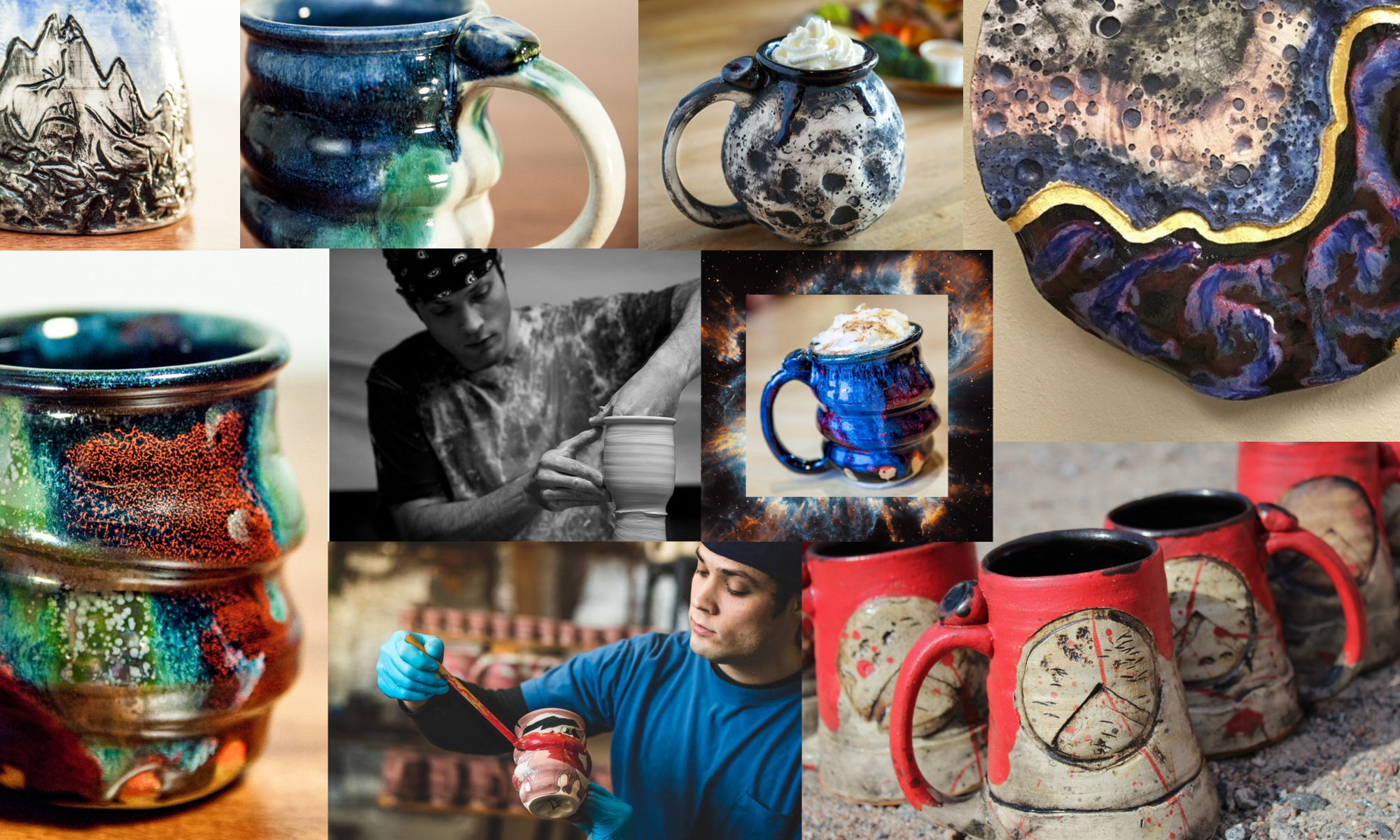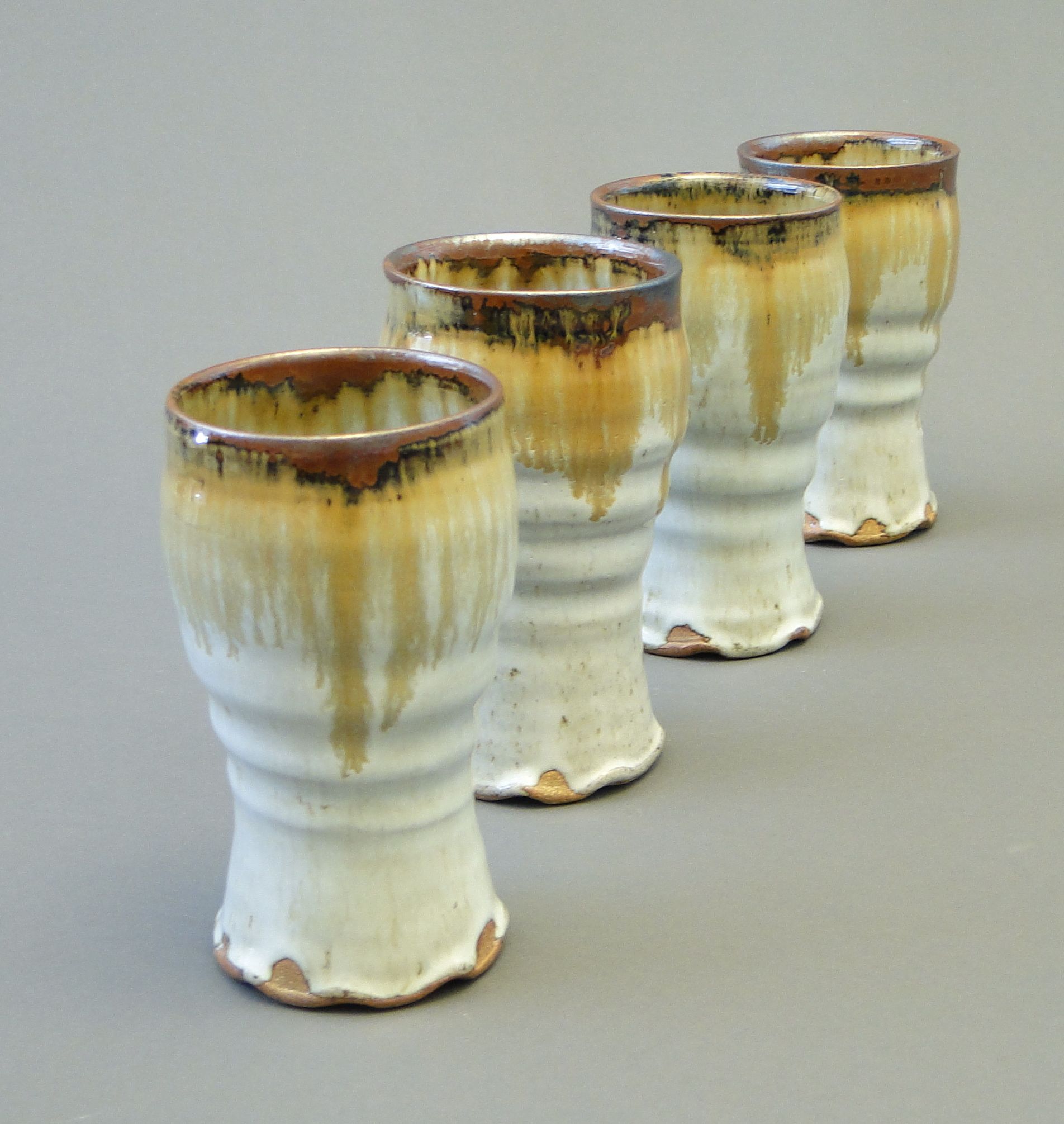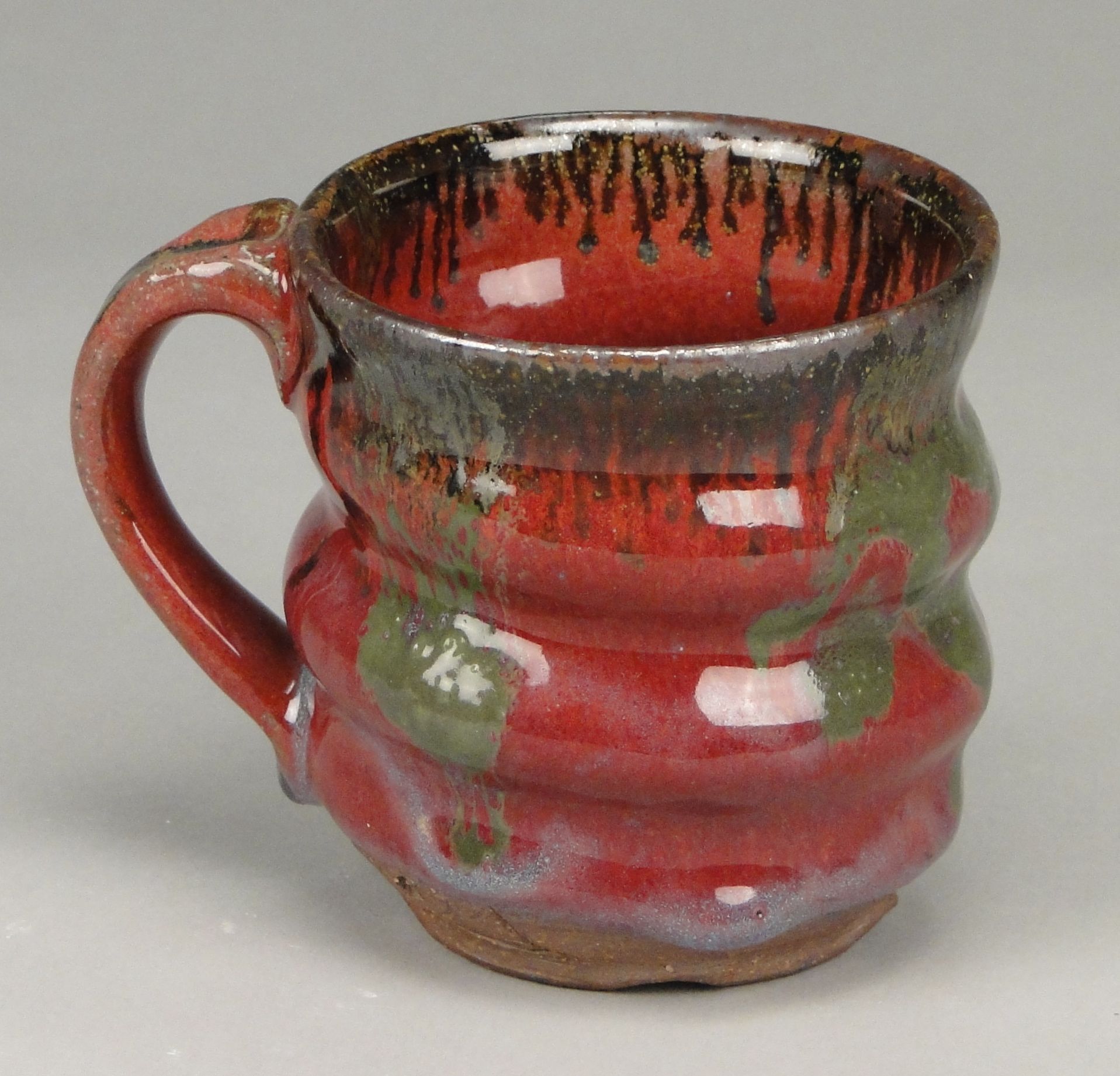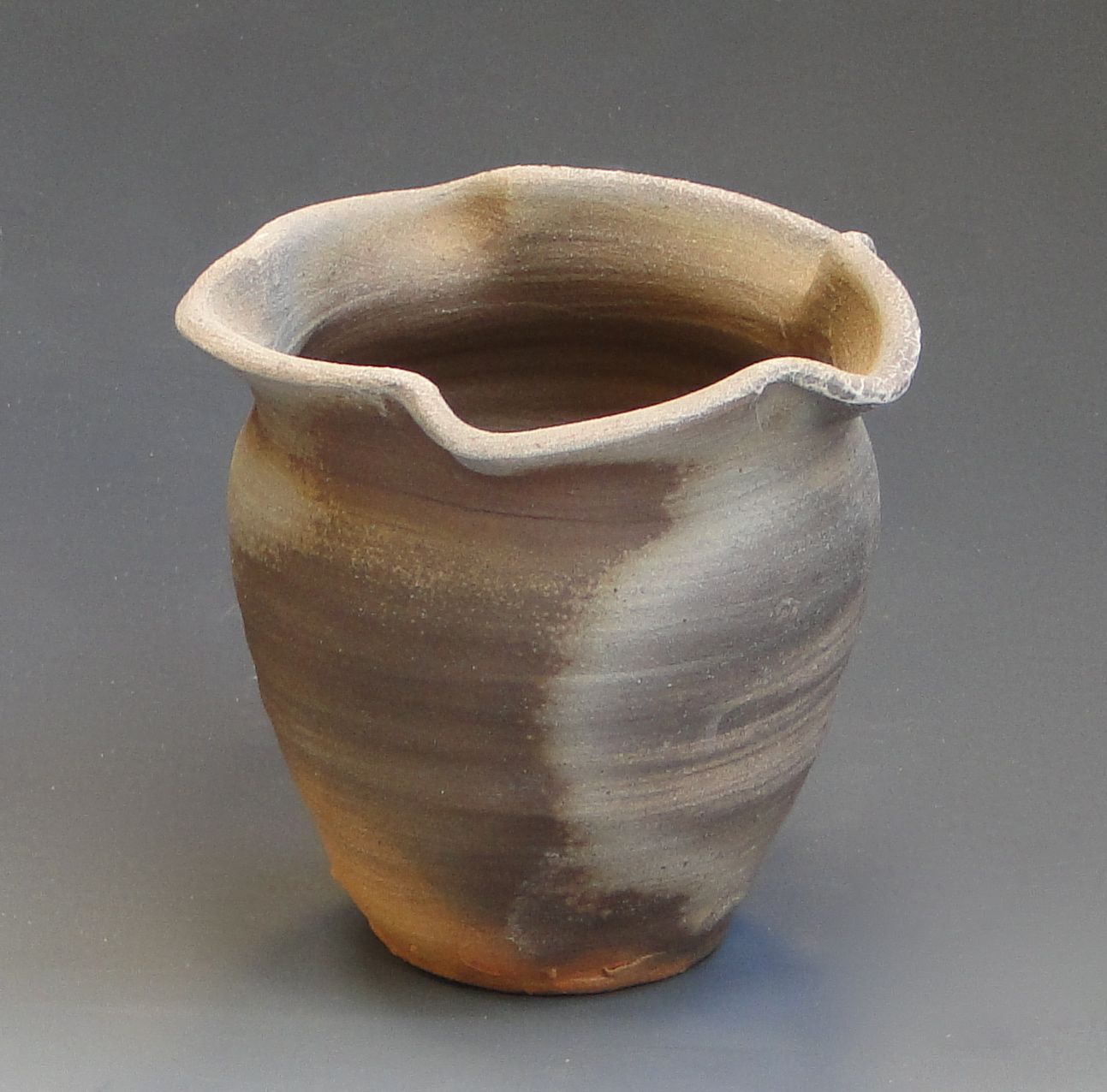This is a wood ash glaze that has been used historically by Japanese and Korean potters. These artists traditionally used rice hull ashes and fired potttery to temperatures upwards of 2500 degrees F. I have spent years adapting my Nuka glaze recipe to melt at a lower firing temperature, and to utilize local wood ashes. My goal is to achieve a fluid, rustic surface while maintaining whiteness.
I also use metal colorants on my glazeware, mainly iron and cobalt. The iron creates rust colors and yellows, and the cobalt produces blues. I mix each colorant with water, then brush them on top of the glazed pottery. During the firing, these colorants drip down the pot and create fluidity and a sense of movement.
This glaze was developed in China over 600 years ago. It was traditionally used on porcelain, to obtain bright colors over the white clay body. I have developed glaze recipes for a white stoneware clay, which often results in burgundy hues. I fire this glaze in natural gas kilns because it is very sensitive to levels of oxygen and gas in the kiln atmosphere, providing natural variations in color. I also enjoy adding drips of colorants to provide more surface movement and color contrast.
The woodfired surface is a huge reason that I got into pottery. The process often involves a community of potters working for 3-6 day long firings. Wood is stoked into the kiln and combusts into flame, ashes and coals, which consumes the pottery and naturally paints the raw clay surfaces. This process influences all of my glazeware.





Nice looking pottery Joel. I just fired my first Nuka yesterday, so I’m excited to see how it turns out on Monday. I put Nuka over top of a Tenmoku.
Have a great weekend,
v/r
Steve Appel
I really like reading an article that can make men and women think.
Also, many thanks for allowing for me to comment!
I would like to purchase one of the world record pots please